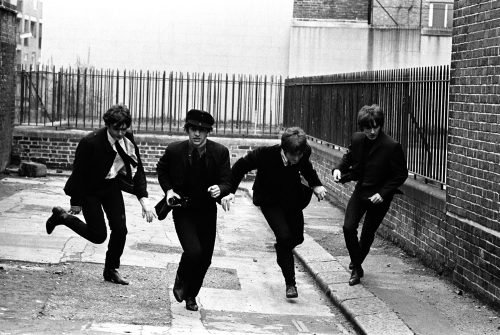Released in the summer of 1964, at the zenith of Beatlemania, “A Hard Day’s Night” is not just a film but a cultural milestone that encapsulates the vibrancy and irreverence of The Beatles at their peak. Directed by Richard Lester, this musical comedy was pioneering, portraying a day in the whirlwind lives of the Fab Four as they dodge fans, manage misadventures, and prepare for a televised concert. Beyond its plot, the film is lauded for capturing the essence of The Beatles‘ charm and the frenetic pace of their early fame, offering audiences an exaggerated peek behind the curtain of the world’s most famous band.
The significance of “A Hard Day’s Night” extends far beyond its initial box office success. It played a pivotal role in shaping the public image of The Beatles, presenting them not just as musicians but as charismatic icons with distinct personalities that fans could relate to and adore. This portrayal added layers to their global image and deepened their cultural impact. Furthermore, the film’s innovative techniques, such as the use of handheld cameras and naturalistic sound, influenced the aesthetics of music videos and filmmaking in popular culture, prefiguring the modern music video format. As such, “A Hard Day’s Night” is not merely a film about a band but a historical artifact that reflects and informs the social and cultural dynamics of the 1960s.
Background

“A Hard Day’s Night” emerged during an electrifying phase of The Beatles’ career, just as they were catapulting to international stardom. By early 1964, The Beatles had not only taken the UK by storm but were also fast conquering the U.S., marked by their historic appearance on “The Ed Sullivan Show.” This period was pivotal, seeing the band transition from popular musicians to global icons, an evolution that would heavily influence the film’s production and reception.
The cultural landscape of the early 1960s played a crucial role in shaping the film. This era, marked by a burgeoning youth culture, was ready to challenge and change the staid norms of the previous decades. The Beatles, with their fresh sound and irreverent demeanor, were at the forefront of this cultural shift. “A Hard Day’s Night” was thus positioned not just as entertainment but as a new cultural statement that resonated with the rebellious spirit of the youth of that time.
The choice of Richard Lester as the director of “A Hard Day’s Night” was instrumental in defining the film’s innovative style. Lester, an American director based in Britain, brought a unique approach that blended spontaneity with stylistic experimentation. Known for his work on the “Running, Jumping and Standing Still Film,” Lester’s knack for quick cuts, handheld camera work, and a quasi-documentary style was a perfect match for The Beatles’ energetic and impromptu personas. His direction not only captured the band’s spirited antics but also helped pioneer a new form of cinematic expression that would influence the music video genre and comedic filmmaking. The synergy between Lester’s visionary techniques and The Beatles’ natural charisma created a film that was dynamic, engaging, and ahead of its time, cementing its place as a landmark in the annals of film history.
Plot Overview
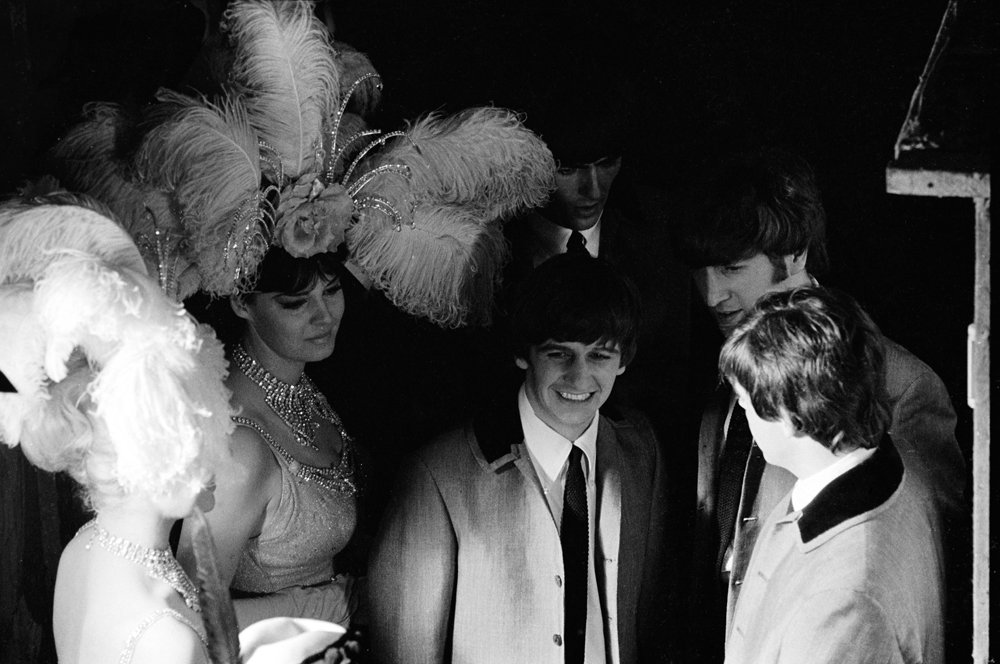
“A Hard Day’s Night” presents a fictionalized and highly stylized day in the life of The Beatles, offering a glimpse into the chaos and charm that defined the band during the height of Beatlemania. The plot follows John, Paul, George, and Ringo as they embark on a frantic journey from Liverpool to London, where they are scheduled to perform on a live television broadcast.
The film opens with The Beatles frantically dodging a mob of enthusiastic fans to board a train, setting the tone for a day filled with humorous escapades. Aboard the train, the band members engage in a series of misadventures, from dealing with their mischievous ways and cheeky interactions with other passengers to managing Paul’s trouble-making grandfather, a mischievous character who consistently stirs up trouble, proclaiming himself a “mixer.”
The narrative continues to unfold in London, where the group encounters more humorous situations while trying to adhere to their hectic schedule. Amid rehearsals and press meetings, they find time for playful antics and a brief escape from their duties, always with Paul’s grandfather stirring the pot. His shenanigans reach a peak when he encourages Ringo to go off on his own, leading to Ringo’s reflective solo adventure that almost causes him to miss the show.
Despite the chaos, the climax of the film centers on The Beatles’ performance, showcasing their music and charismatic stage presence. The film concludes on a high note with the band successfully making it to their live performance, delighting fans and proving their professionalism in the face of relentless whimsy and numerous comedic obstacles. Through its plot, “A Hard Day’s Night” captures the essence of The Beatles’ lives at this time—marked by a mix of relentless demands, joyful rebellion, and the sheer exhilaration of being the world’s most famous pop group.
Key Themes and Style
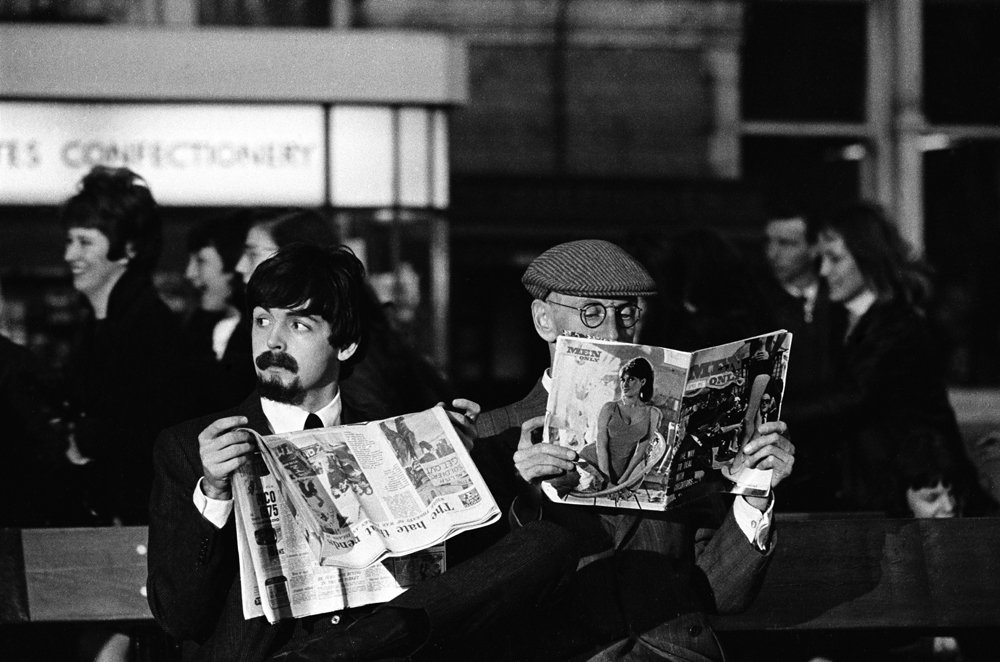
“A Hard Day’s Night” is rich in themes that capture the essence of the 1960s, addressing fame, youth culture, and the dynamics of the music industry. The film portrays the Beatles as both prisoners and beneficiaries of their fame, constantly surrounded by screaming fans and pursued by the media. This frenzied adulation is depicted with a dual edge—exhilarating yet exhausting, offering a satirical look at the absurdities that fame can bring. The band’s interactions with various characters, from stuffy businessmen to adoring fans, underscore the generational clash between the rebellious youth of the 1960s and the more conservative older generation. This juxtaposition serves as a backdrop for exploring themes of freedom and rebellion, pivotal elements of youth culture during that era.
The film also delves into the mechanics of the music industry, subtly critiquing its commercial aspects. Through humorous escapades involving managers and TV producers, “A Hard Day’s Night” comments on the manufacturing of pop music fame and the tension between artistic authenticity and commercial obligations. This satirical lens not only entertains but also invites the audience to ponder the realities faced by the world’s most famous band at the time.
Cinematic Style
Richard Lester’s directorial approach in “A Hard Day’s Night” was groundbreaking, significantly influencing the visual language of music videos and modern filmmaking. The film is noted for its innovative use of handheld cameras, which impart a sense of immediacy and intimacy, effectively capturing the chaotic energy surrounding The Beatles. This technique allowed the film to have a freewheeling, almost documentary-like feel, making the audience feel part of the Beatles’ world, blurring the line between the viewers’ experience and the band’s perspective.
Moreover, Lester’s use of quick-cut editing was revolutionary at the time and has since been recognized as a precursor to the modern music video style. These rapid transitions helped to maintain a brisk, rhythmic pace throughout the film, mirroring the upbeat tempo of The Beatles’ music and the fast-paced nature of their lives. This editing style not only kept viewers engaged but also helped to emphasize the comedic elements of the film, enhancing timing and the impact of visual gags.
Together, these thematic and stylistic elements create a dynamic portrayal of The Beatles that is both a product of its time and a timeless cultural document. The film’s playful yet insightful exploration of fame and youth set against innovative cinematic techniques contributes to its enduring appeal and significance in film and music history.
Music and Soundtrack
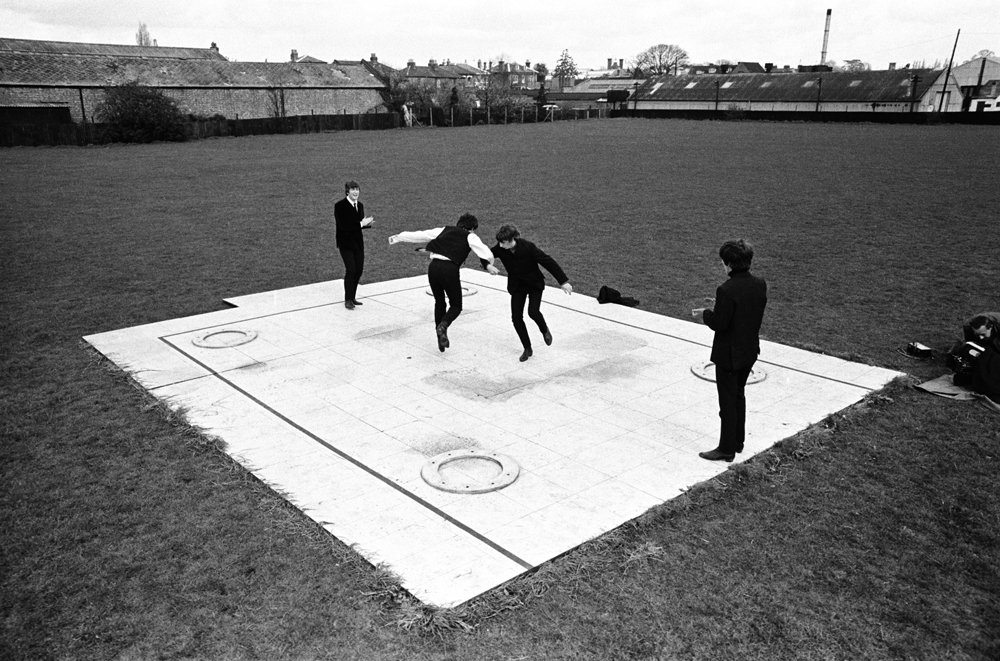
The soundtrack of “A Hard Day’s Night” not only amplifies the film’s narrative but also serves as a vital component that showcases The Beatles’ innovative musical style during the early 60s. Each song is cleverly integrated into the film, enhancing the story while also standing out as memorable musical performances in their own right.
The film opens with the energetic strains of the title track, “A Hard Day’s Night,” immediately setting a lively and youthful tone. The song, with its iconic opening chord and catchy melody, accompanies a montage of The Beatles dashing through a train station, escaping hordes of fans. This opening sequence perfectly encapsulates the chaotic thrill of Beatlemania, aligning the film’s visual and musical elements to introduce the themes of fame and frenetic pace that define the band’s life.
“Can’t Buy Me Love” is another standout, used during a playful escapade in a field, which serves as a brief respite from the Beatles’ otherwise hectic schedule. The scene is shot with the band members frolicking and joking around, and the song’s upbeat tempo and jubilant lyrics underscore their momentary freedom from the pressures of stardom. This sequence is particularly notable for its music video-like presentation, predating and predicting the format that would later dominate MTV and similar platforms.
Throughout the film, other songs such as “If I Fell,” “And I Love Her,” and “I Should Have Known Better” are woven into the narrative, often performed in intimate settings that highlight the band’s harmonies and musical cohesion. These performances are not just interludes but pivotal moments that enhance character development and the storyline, showing the band’s interactions and solidarity amidst their surreal fame.
The integration of the soundtrack with the film’s plot points demonstrates a sophisticated use of music to advance the film’s narrative, reflecting the band’s real-life experiences and emotional states. For example, “I Should Have Known Better” is performed in a train compartment, symbolizing the close quarters of their shared experiences both as musicians and friends, while also serving as a light-hearted break from the narrative’s momentum.
Ultimately, the “A Hard Day’s Night” soundtrack, composed primarily of songs written by John Lennon and Paul McCartney, not only bolstered the film’s appeal but also solidified the soundtrack as a landmark in rock and roll history. Its success is a testament to its integration into the film’s narrative, enhancing the storytelling while providing audiences with a deeper connection to the music of The Beatles.
Cultural Impact and Legacy
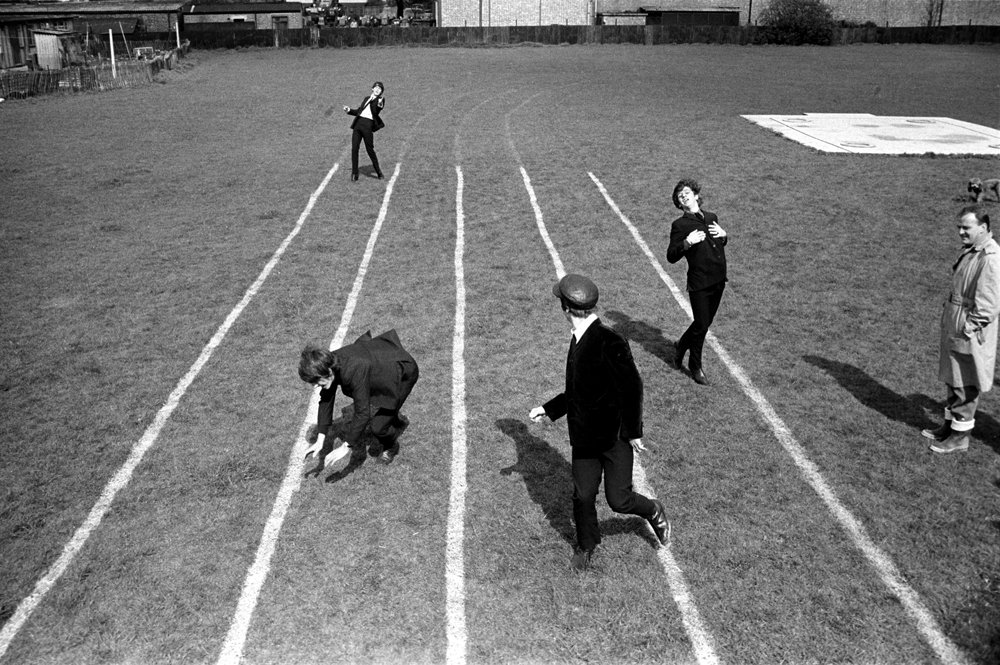
Upon its release in 1964, “A Hard Day’s Night” was not just a commercial success but a cultural phenomenon, reflecting and amplifying the Beatles-mania that was sweeping the world. Critics and audiences alike embraced the film for its innovative portrayal of a day in the life of The Beatles, combining humor, infectious music, and a candid glimpse into the lives of the Fab Four. The film’s reception was overwhelmingly positive, with many praising its ability to capture the charm and charisma of John, Paul, George, and Ringo. It was a box office hit, further cementing The Beatles’ status as cultural icons of the 1960s.
The legacy of “A Hard Day’s Night” is multifaceted, influencing both the realms of film and music. In film history, it is celebrated for its pioneering cinematic techniques, particularly the use of handheld cameras and quick-cut editing. These methods provided a blueprint for future music videos and concert films, offering a more dynamic and immersive way to present musical artists. The film’s style influenced a slew of music documentaries and rock musicals that sought to emulate its vibrant energy and innovative narrative structure.
Creating Music History
In terms of music history, the soundtrack of “A Hard Day’s Night” itself became a milestone, being one of the first successful instances where a film’s music was entirely composed of original songs by the band featured in it. This set a precedent for future soundtracks and reinforced the concept of musicians as versatile artists capable of dominating multiple entertainment mediums.
Moreover, “A Hard Day’s Night” captured The Beatles at a critical moment in their career, showcasing their personalities and musical talents in a way that no other medium had. It helped shape the public’s perception of The Beatles not just as musicians but as a cultural phenomenon. The film provided a template for how bands and their music could be marketed and presented to the public, influencing how artists engage with visual media to define their images and interact with fans.
The enduring appeal of “A Hard Day’s Night” lies in its ability to capture a moment in time that is both specific to the 1960s and timeless in its depiction of youthful exuberance and musical innovation. Decades later, the film remains a cherished artifact of pop culture, beloved by new generations of fans and revered for its historical significance in shaping the intersection of film and popular music. Its influence is evident in the countless music films and documentaries that have since tried to capture similar magic, making “A Hard Day’s Night” not just a film about a band but a lasting symbol of how music and film can together capture and influence culture.
